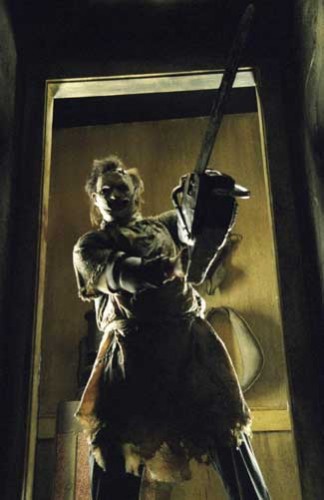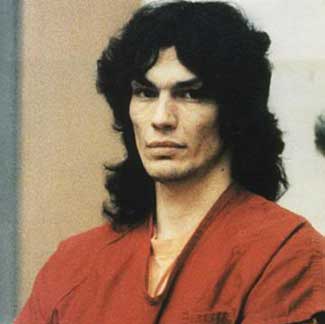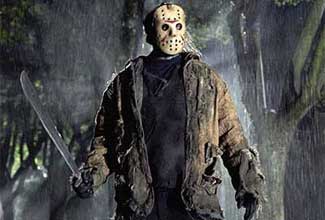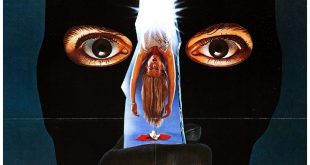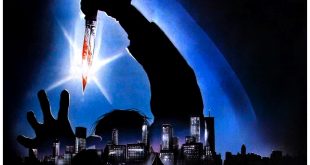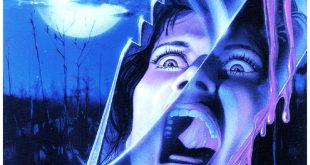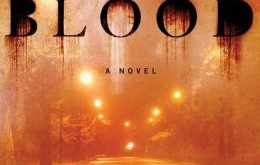What is the American obsession with seeing screaming victims helplessly hacked to pieces? Since the beginning of the slasher film, many have asked this question. Why this morbid passion has become so phenomenal. Fear, for some, is an emotion that is sought out on a regular basis. “Thrill seekers” of all walks of life enjoy a good scare. Some seek it in outdoor events, such as rock climbing or skydiving. Others prefer roller coasters or “Thrill rides.” Some choose to be scared within the comfort and safety of their own homes… or movie theaters. They enjoy the rush of fear, without the actual danger. Some, enjoy both options.
The Horror audiences of the past to the present have seen the genre grow quite rapidly. Some fans say the “Slasher” genre started in the early nineteen eighties with such films as Halloween, Friday the Thirteenth, Black Christmas and Alice, Sweet Alice. Others say the early seventies, with such classics as The Last House on the left. Alfred Hitchcock’s Psycho (based off of the novel by Robert Bloch) was also inspirational in this bloodstained field of Slasher flicks (despite the little amount of bloodshed it actually showed). In a difference of opinion among some, The Texas Chainsaw Massacre would fall into this category of early slasher as well (also showing very little on-screen violence, as it was aiming for a PG rating by Director, Tobe Hooper). Some disagree. Although the slight difference in opinion, The Texas Chainsaw Massacre will always be a classic horror film, even if the slashing is with a chainsaw and meat-hook (not to mention a skull bashing with a mallet).
The categories given to this brand of movies were often labeled by the amount of blood shed during the full length feature. Most would also call a Slasher flick your basic “stalk and kill.” Gore was introduced to cinema in full bloody color by Herschell Gordon Lewis and his notorious classic Blood Feast. Since then, the slasher genre has kept the brutality (for it’s time) of this original monument of gore and continuously up the bloody stake for more elaborate ways to gruesomely die. The core elements of the classics listed above are present in the following slasher flicks of today. Many today are influenced by actual serial killers, such as Psycho was inspired by serial killer, Ed Gein.
In some modern cases, Serial Killers have carved a place in film history as well as the victims lives they have actually destroyed and taken. More recently produced and often grouped Slasher films such as Dahmer, Ed Gein, Gacy, BTK, The Hillside Strangler, The Green River Killer, Deranged and Nightstalker are growing in popularity. One leading film of this group would most likely be Henry: Portrait of a Serial Killer. Eighties films such as William Lustig’s Maniac and The Prowler were highly influenced by true crime related serial killers. Jack the Ripper has also played a big part in cinematic carnage with films such as Jack the Ripper, The New York Ripper and Dario Argento’s Sleepless, which is a New York based Jack the Ripper tale. Ed Gein has spawned classics such as Psycho, The Texas Chainsaw Massacre and the psychological, Academy Award winning Thriller, The Silence of the Lambs (more psychological than Slasher). Most Slasher films stick with the Serial Killer theme in some way, form… or… ”Shape..”… Living… or after many sequels of coming back from the dead.
A lot of slashers are usually first person point of view as well as third, putting the viewer’s eyes behind those of the ruthless killer. This gives a voyeuristic point of view of the stalk and prey sequences. With films such as Maniac, the idea was to simply put Jaws on land and in human form, instead of killer shark.
Some Film Makers have certain rules they follow when making a Slasher Film. For some, these rules are different than for others. Some say there must be a kill every fifteen minutes for their production to be considered a Slasher Film. Some say the action must be started within the first twenty minutes of the feature… Followed by a kill every fifteen minutes or less. Some add a specific amount of nudity to the equation. This is usually said to be following the Friday the thirteenth formula that it made so very popular and loved. The famous “Jump sequence”(later known in the industry as a “Smash cut”), rather it be a fake/ false scare or a sudden and eye popping kill scene, is almost mandatory as well. The first “Jump scene” or “smash cut” was said to be introduced in The Last House on the Left when the lead villain, Krug Stillo lifts his machete as they chase Mary through the woods. It was later made extremely popular by John Carpenter in his classic Halloween.
Holidays and special occasions have become the themes of many genre related titles. Films such as Halloween, Friday the Thirteenth, My Bloody Valentine, Valentine, Mother’s Day, April Fool’s day, Silent Night, Deadly Night, Black Christmas, Prom Night and Graduation Day have put a twist of fear into these varied days of celebration.
Joe Bob Riggs’ (a professional in the Slasher business of both film making and reviewing) classic Drive-In Theater on The Movie Channel was a Slasher outlet for those with the premium cable package. Joe Bob’s show showed nothing but classic eighties slasher films. He had a breast count and body count before every show. Classic films such as Slumber Party Massacre, Prom Night, My Bloody Valentine, April Fool’s Day, Sleepaway Camp, Alone in the Dark and a host of others could be promised every week for the blood thirsty gore hound. Tamer, commercially butchered shows on basic cable such as USA Network’s classic Saturday Nightmares and USA’S Up All Night (hosted by Comedian Gilbert Godfreid and Rhonda Shear) also showed a different slasher classic every weekend… Although the features themselves were hacked to pieces by editing and advertising.
Slasher films also birthed the beautiful, victimized vixen commonly known as the “Scream Queen.” Teenage girls and women who screamed through most of the feature and did it quite well. Most were chased and slaughtered after having sex or sinning in some way, shape or form. Some movies such as Silent Night, Deadly Night caused outrage in Women’s groups all over America. An overlooked fact in this matter is… although there are mostly women being chased and killed throughout the film, there is nine times out of ten a woman heroin that always comes out in the end. There are also males mutilated throughout the course of most of these films. Usually all of her male friends have died. In films such as Sleepaway Camp, the killer is a woman (well, technically…Half way). Among the most popular of the genre are Jamie Lee Curtis(in the footsteps of her mother, Psycho’s own Janet Leigh) of the Halloween, Prom Night and Terror Train fame. Linnea Quigley of Silent Night, Deadly Night and many other countless movies prior to and afterwards… and Brinke Stevens of Slumber Party Massacre.
more controversial sub-genre of the slasher film is the Rape/ Revenge film. In these films, the woman is usually victimized in the beginning and slashed her way to the end in a bloodbath of those who victimized her… Or their sex in general. In the Rape/ Revenge film, the woman starts out the victim and ends up the killer. Usually they end up living as well. This is very different for the male stalkers and killers, who usually end up meeting their brutal demise by a woman or child (such as Friday the Thirteenth IV: The Final Chapter). Films such as I Spit on Your Grave, Mother’s Day, Hunting Season and House on the Edge of the Park (well ,a group effort of the victim’s family and friends) portray the woman as both the brutally victimized Protagonist and the vengeance seeking, brutally punishing antagonist as well.
Many slasher films of the eighties have also included the infamous “kill scene.” This is the way someone is horribly maimed for the viewer’s enjoyment. The more grotesque and shocking, the better. These are the scenes that usually get the most irate audience responses in theaters. Also, these scenes have spawned the popularity of such Special Effects masters as Tom Savini, Screaming Mad George and Rick Baker, which paved the way for the contemporary masters of the craft, such as Greg Cannon, Wayne Toth, KNB Effects and Toe Tag Pictures.
Much like Friday the Thirteenth and Halloween, Some film makers, such as Wes Craven put a twist on the Slasher genre (which he also pioneered the scene with The Last House on the Left) by creating killers such as Freddy Krueger and Horace Pinker. Killers that can stalk their victims in their dreams or through electricity. In Freddy’s situation, much like Jason Vorhees and Micheal Myers, he keeps coming back from the dead… for the many sequels that have followed the original. Even puppets and dolls, as seen in the Puppet Master and Child’s Play franchises, are beginning to slash their way into the homes and hearts of many.
For popular slasher franchises such as Halloween, Friday the Thirteenth and more recently, the Scream and I know what you did last Summer series, the slasher film genre seems to have no end. Newer films such as Nick Palumbo’s Murder-Set- Pieces, Fred Vogel’s August Underground, Clive Barker’s Midnight Meat Train and Rob Zombie’s The Devil’s Rejects have taken the slasher genre into a dark, new territory.
Most eighties slashers are making their way back onto the big screen and into a new generation of film with the very controversial theme among Horror fans… The re-make. Many films from the seventies and eighties are being revised, revamped and revisited and regurgitated all over again. Many are against this movement. “Let the classics stay classic” is the battle cry of most hardcore fans. Films such as Friday the Thirteenth, The Last House on the Left, Halloween, The Texas Chainsaw Massacre, My Bloody Valentine, A Nightmare on Elm Street and The Toolbox Murders are re-made, which in a way is blasphemous to many. On another note, it digs up the classic originals for the curious, new generation of Slasher Film fans. If by re-makes or new original ideas, the stalkers and killers of the silver screen slasher flicks will never die. They will always continue to stalk and slash their ways through box offices and living rooms all over the world. Ironically, the best way to enjoy a good slasher flick in all of it’s gory glory… is UNCUT, or the “Director’s Cut” if they can make it past the slicing, cutting and slashing of the MPAA. To many Film Makers trying to push the limits of Horror/ Slasher cinema (although restored in most dvd, Director’s Cuts), The Motion Picture Association of America does more cutting and hacking than the psychotic, blade wielding killers portrayed in the films themselves.
 Horror News | HNN Official Site | Horror Movies,Trailers, Reviews
Horror News | HNN Official Site | Horror Movies,Trailers, Reviews
